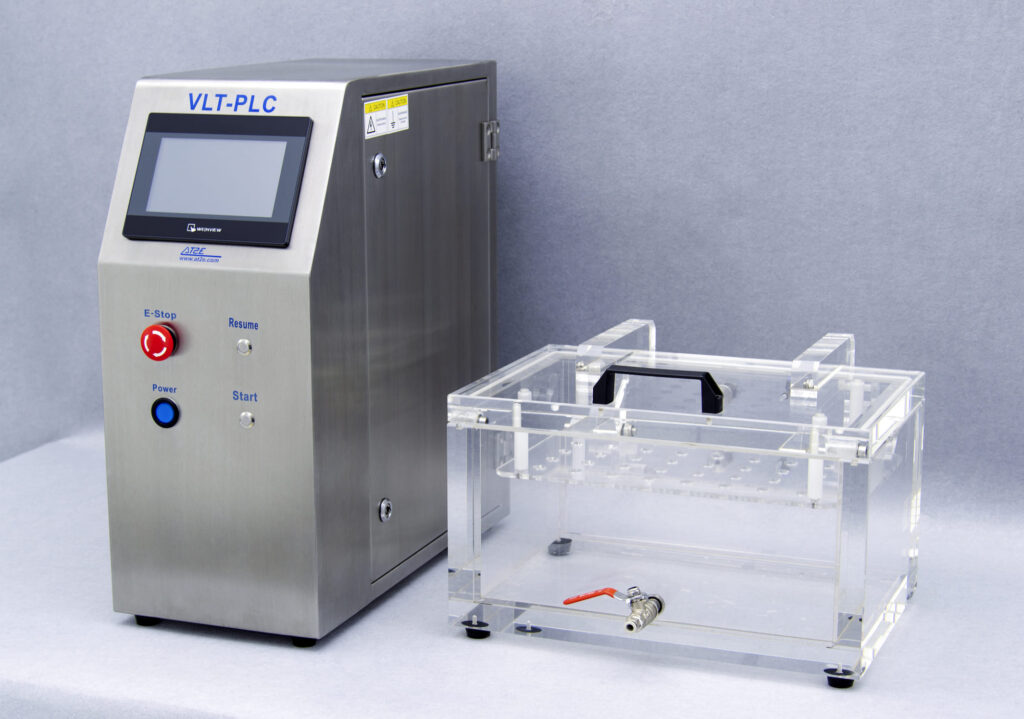
Ensuring the integrity of packaging and products is essential across various industries, from food and beverage to pharmaceuticals. One of the critical aspects of this is vacuum leak testing. In this guide, we’ll delve into the best practices for testing vacuum leaks, with a focus on using the AT2E USA Vacuum Leak Tester Standard Model VLT-ST.
Understanding Vacuum Leak Testing
Vacuum leak testing is a non-destructive method used to detect leaks in sealed packages, containers, or systems. It ensures that the product maintains its quality and safety by confirming that no contaminants or air can enter.
Why Vacuum Leak Testing is Important
Vacuum leak testing is crucial for several reasons:
- Product Safety: Ensures that the product remains uncontaminated.
- Regulatory Compliance: Meets industry standards and regulations.
- Cost Savings: Prevents product recalls and wastage.
- Customer Satisfaction: Maintains the quality and integrity of the product.
Steps to Test for Vacuum Leaks
Step 1: Prepare the Equipment
Before beginning the vacuum leak test, ensure that you have the appropriate equipment. The AT2E USA Vacuum Leak Tester Standard Model VLT-ST is an excellent choice due to its reliability and precision.
Step 2: Prepare the Sample
Place the sample (e.g., a bottle, can, or container) in the vacuum chamber. Ensure it is properly positioned and secured.
Step 3: Initiate the Vacuum
Start the vacuum pump to reduce the pressure inside the chamber. The VLT-ST model allows you to set the desired vacuum level accurately.
Step 4: Monitor for Leaks
Observe the sample and the vacuum gauge. The VLT-ST model has a clear display and precise controls to help you detect any leaks easily.
Benefits of Using the AT2E USA Vacuum Leak Tester Standard Model VLT-ST
The AT2E USA Vacuum Leak Tester Standard Model VLT-ST offers several advantages:
- Accuracy: Provides highly precise measurements.
- Ease of Use: User-friendly interface and controls.
- Versatility: Suitable for various types of packaging.
- Durability: Built to last with high-quality materials.
Common Applications of Vacuum Leak Testing
Food and Beverage Industry
Ensuring that packaging is leak-proof prevents contamination and extends shelf life.
Pharmaceutical Industry
Maintains the sterility and integrity of medical products.
Automotive Industry
Ensures that components like fuel systems and air conditioning units are leak-free.
Troubleshooting Common Issues
Inconsistent Results
Ensure that the vacuum chamber is clean and free from any debris that might affect the test results.
False Positives
Double-check the sample placement and ensure that the sealing is proper.
Conclusion
Vacuum leak testing is an essential process to ensure the integrity and safety of various products. Using the AT2E USA Vacuum Leak Tester Standard Model VLT-ST can help achieve accurate and reliable results, making it a valuable addition to your quality control processes.
By following these steps and best practices, you can effectively test for vacuum leaks and maintain high standards for your products.
Feel free to visit the AT2E USA website for more information on their products and services.
